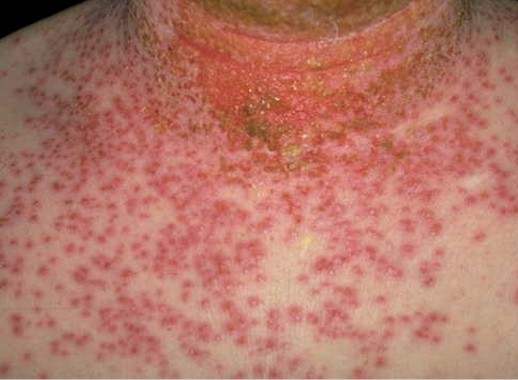ECZEMA HERPETICUM or Herpes Simplex Virus Eczema

Eczema herpeticum starts as atopic eczema which is scratched usually by the patient or another person who has herpes simplex virus also known as HSV type I. The normal location for HSV type I to be found is oral or around the mouth. However, it can be found at any location of the body as it may possibly spread. From the initial scratch or entrance in a crevice by some means into the atopic eczema, the eczema herpeticum spreads simply by hand contact or by scratching or any other means. Please remind yourself that if the herpes virus can gain entrance through the skin barrier which has been injured by fingernails or some small wound, thereafter any other virus, bacteria or fungus can also. So an excellent sterile approach should be taken to prevent the entrance of any other invading parasites for prevention of further enlarging the contact area or spreading of the eczema herpeticum.
Eczema-Ltd III, is the best treatment on the market to combat Eczema Herpeticum
Eczema herpeticum normally develops from atopic eczema after skin entrance of the virus HSV type I 'cold sore'. Eczema Herpeticum can occur when anyone with atopic eczema. Eczema herpeticum is first recognized in its original form of a group of small wound sores amidst the atopic eczema with several small 'serous transparent fluid sores' or lesions (from the skin wound after scratching) accumulating and sometimes with the serous fluid accumulating into a small blister. As the viral infection begins to grow, the transparent serous fluid turns into a yellow pus pocket. As the viral infection of a red rash with yellow pus pockets spreads, there is a chance of the patient feeling poorly and beginning to have a higher temperature. A personal doctor may need to be seen, and possibly hospitalization.
